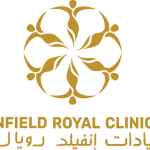Introduction
Rhinoplasty is a multifaceted surgical procedure with different approaches tailored to individual needs. Whether you're seeking aesthetic improvement, functional correction, or both, understanding the various types of the Best Rhinoplasty Surgery Clinic in Oman is crucial in making an informed decision. This guide explores the primary rhinoplasty techniques, their unique attributes, and how to select the best option for your desired outcomes.
Process
1. Open Rhinoplasty
Process: Open rhinoplasty involves making an incision across the columella (the tissue between the nostrils) in addition to internal nasal incisions. This technique provides the surgeon with a clear view of the nasal structures, allowing for precise adjustments.
Benefits:
- Greater visibility and control over the nasal structures.
- Ideal for complex cases requiring significant alteration or reconstruction.
- Enhanced ability to address both aesthetic and functional issues simultaneously.
Characteristics:
- A visible scar on the columella, which generally fades over time.
- Longer recovery period compared to closed rhinoplasty.
- Detailed and meticulous approach suitable for major reshaping or correcting structural issues.
2. Closed Rhinoplasty
Process: Closed rhinoplasty is performed through incisions made inside the nostrils, leaving no external scars. This approach is used for less complex cases where less extensive reshaping is required.
Benefits:
- No external scarring.
- Typically shorter recovery time compared to open rhinoplasty.
- Minimal swelling and bruising.
Characteristics:
- Limited access to nasal structures, can restrict the extent of changes that can be made.
- Suitable for patients seeking subtle modifications rather than major transformations.
- Less invasive with a quicker recovery, though less suitable for complex cases.
3. Non-Surgical Rhinoplasty (Liquid Rhinoplasty)
Process: Non-surgical rhinoplasty uses injectable dermal fillers, such as hyaluronic acid, to alter the shape of the nose. This technique is ideal for individuals looking for temporary changes or those who are not ready for surgery.
Benefits:
- Non-invasive with no downtime.
- Immediate results with minimal discomfort.
- Reversible, allowing adjustments if desired.
Characteristics:
- Results are temporary, typically lasting from 6 months to 2 years.
- Ideal for minor enhancements or correcting asymmetries.
- Not suitable for significant changes or functional improvements.
4. Filler-Based Rhinoplasty
Process: Similar to non-surgical rhinoplasty, filler-based rhinoplasty involves the use of injectables to reshape the nose. However, this method may focus more on adding volume and contouring rather than just minor adjustments.
Benefits:
- Provides a more defined nose shape with the ability to correct minor imperfections.
- Minimal recovery time with immediate results.
- Suitable for patients seeking enhancement without a permanent commitment.
Characteristics:
- Results are temporary and require maintenance treatments.
- Ideal for those looking for a subtle enhancement rather than major changes.
- Not a replacement for surgical rhinoplasty in cases requiring structural modifications.
Conclusion
Choosing the right type of rhinoplasty depends on various factors, including your goals, the extent of changes needed, and your overall health. Open rhinoplasty offers the most comprehensive approach for significant alterations, while closed rhinoplasty provides a less invasive option with quicker recovery. Non-surgical and filler-based rhinoplasties are ideal for those seeking temporary or minor adjustments without the need for surgery.






Comments